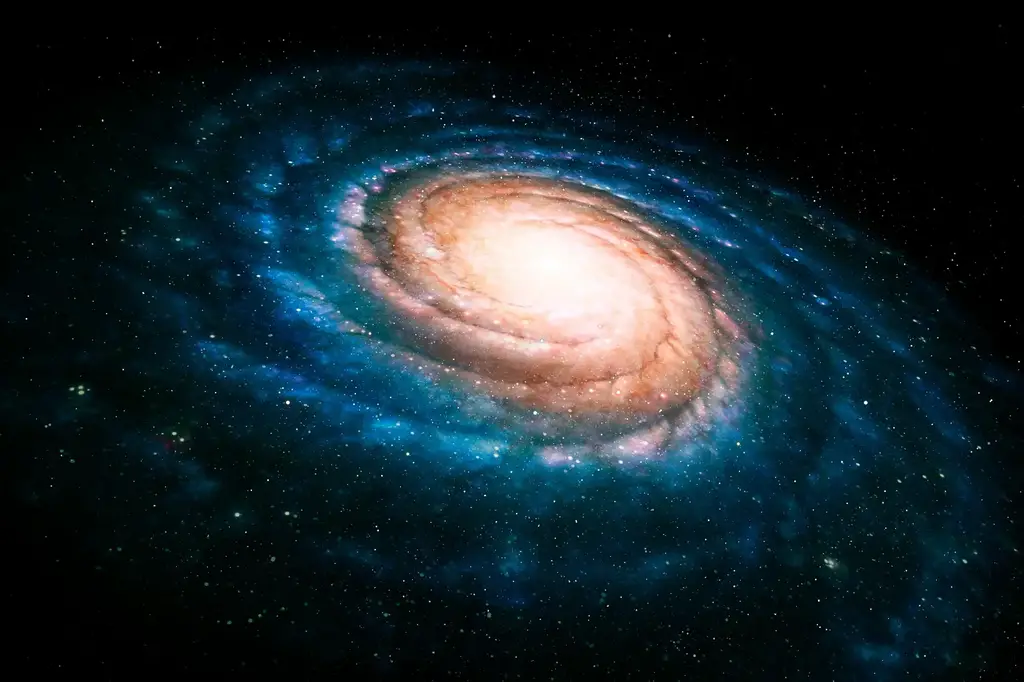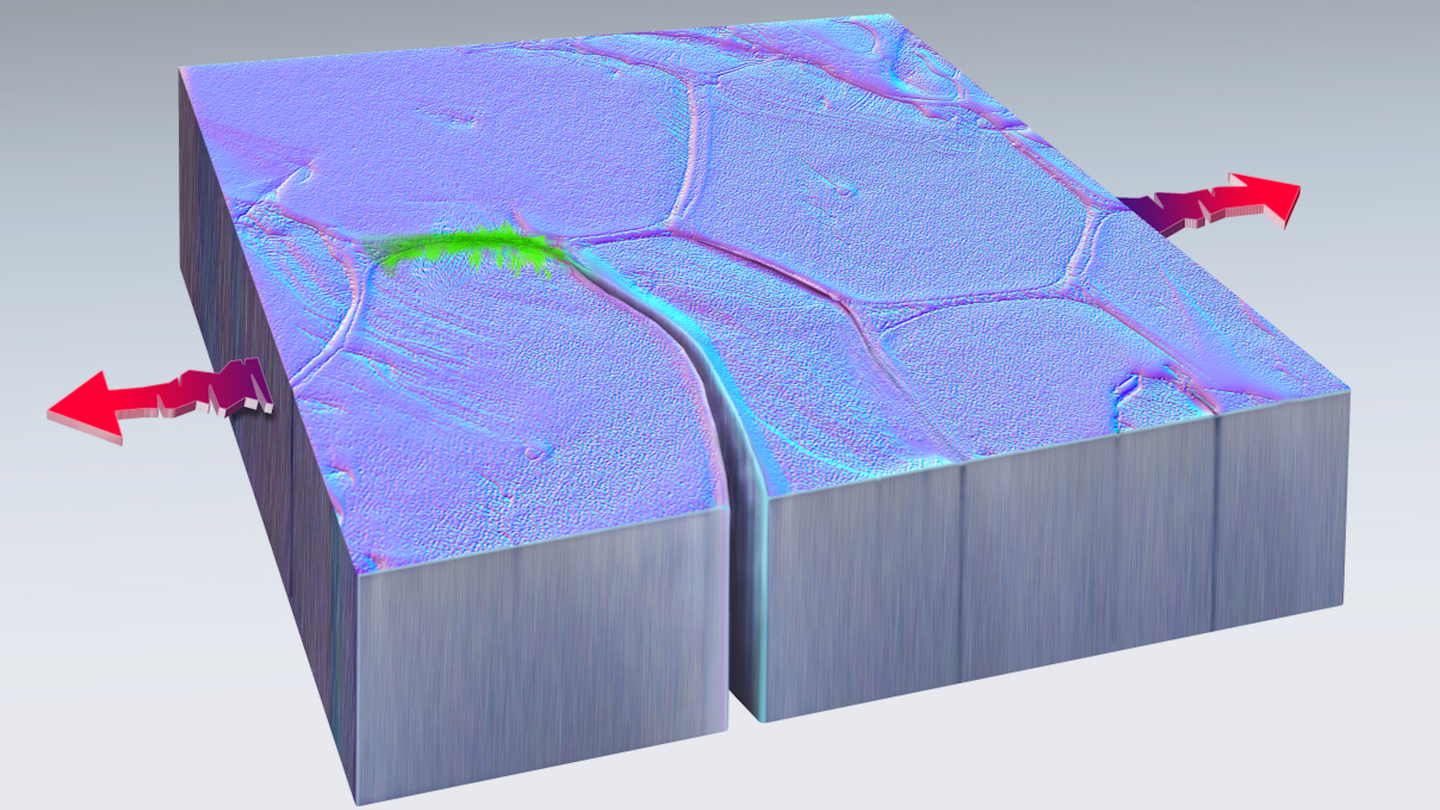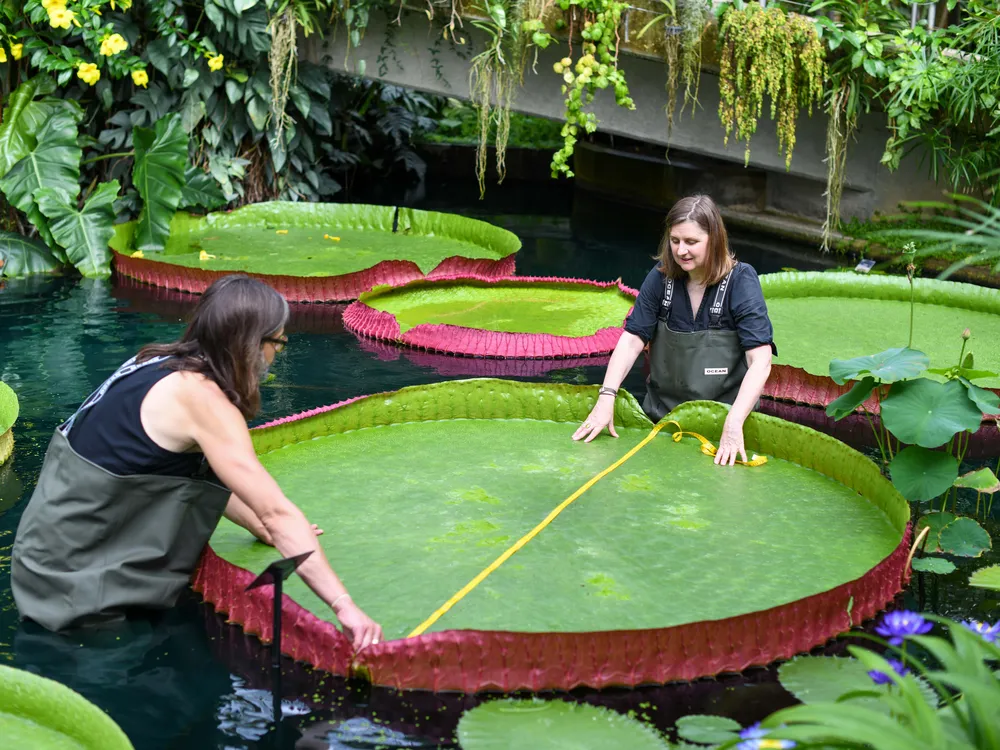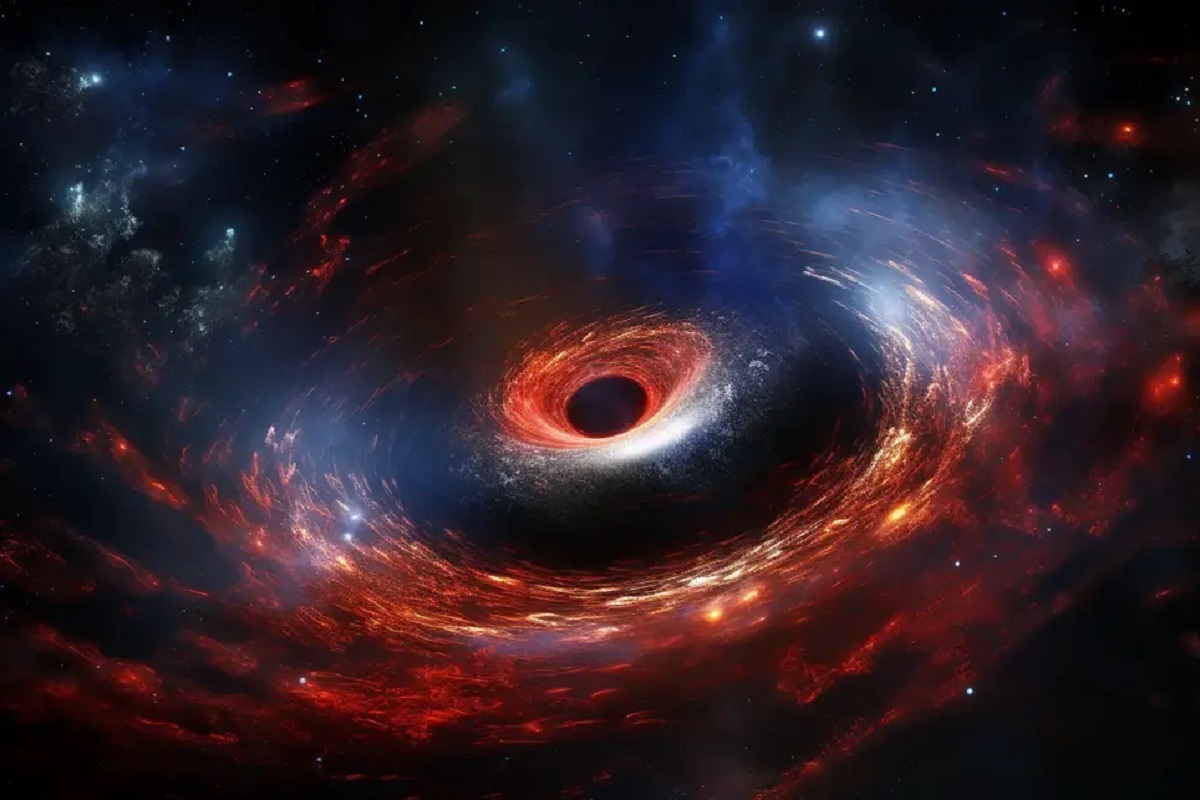Astronomers used a powerful telescope called ALMA to create a temperature map of an old galaxy’s dust. This map showed differences in temperature between the central supermassive black hole and the cooler areas where stars form. The study helps us understand how galaxies and their black holes grow in the early Universe.

The researchers found that the temperature of the dust in the galaxy can vary depending on where it is located. They were able to measure the temperature in different regions, which was challenging before because of limited instrument resolution. This new map provided clear evidence of temperature variations, suggesting two sources of heat: the black hole at the center of the galaxy and the heat from newly-formed stars in the surrounding rotating disk.
Dr. Takafumi Tsukui from the Australian National University led the study. He explained that most distant galaxies’ dust temperatures were measured as a whole, but they wanted to measure temperature region by region to understand individual heat sources. Previous temperature mapping was mostly limited to nearby galaxies.
The research revealed that the central region of the galaxy had warm dust, heated by the supermassive black hole. In contrast, the outer region had colder dust, likely heated by star formation. It’s common for galaxies to have a supermassive black hole in the center, and as the galaxy grows, the black hole also increases in mass. When gas accretes to the black hole, collisions with fast-moving particles heat it up, sometimes making it shine brighter than the rest of the galaxy.
The heating energy from the black hole reveals how much gas is being fed into it and thus its growth rate. On the other hand, the heating energy from star formation indicates how many new stars are forming in the galaxy, reflecting the galaxy’s growth rate.
This discovery gives us a clearer understanding of how galaxies and their central black holes form and grow in the early Universe.
The researchers were able to conduct this study thanks to the ALMA telescope operated by the European Southern Observatory in Chile. ALMA is a powerful telescope for measuring millimeter and submillimeter radiation. It allowed them to look at a 12-billion-year-old galaxy and separate the image into two components: one with dust heated from the central supermassive hole and the other with dust from the underlying host galaxy.
The detailed temperature map provided by ALMA helps scientists gain insights into the galaxy’s evolution. Prior to this study, they could only measure the temperature of distant galaxies in broad terms. Now, with this advanced technology, they can understand temperature variations in individual areas, which gives a better understanding of how galaxies evolve over time.









